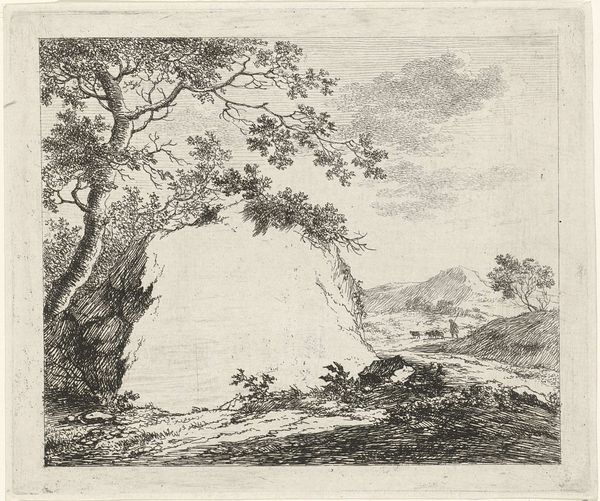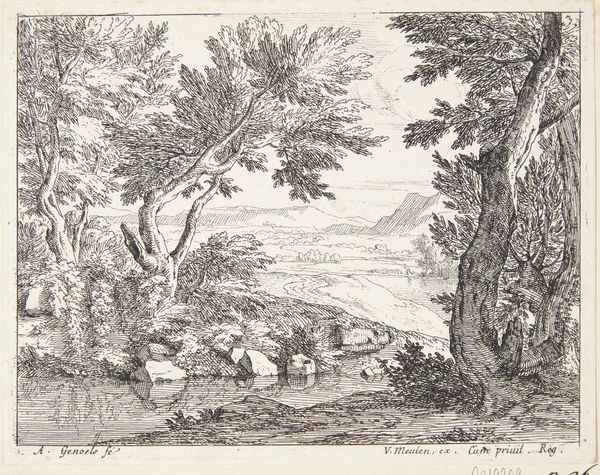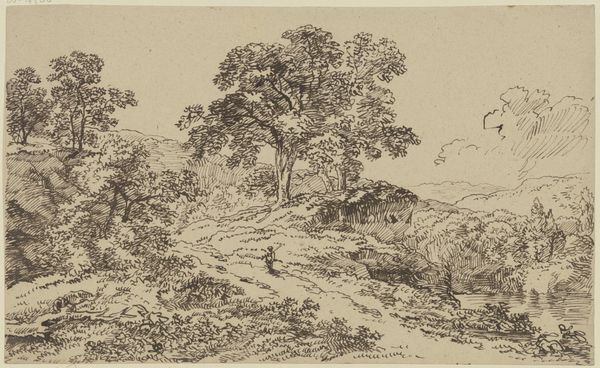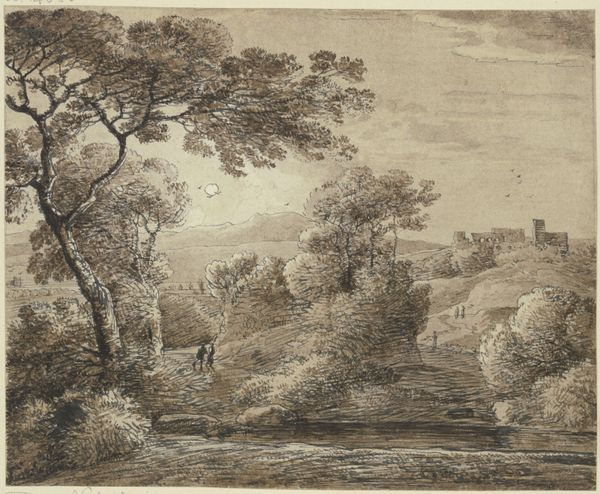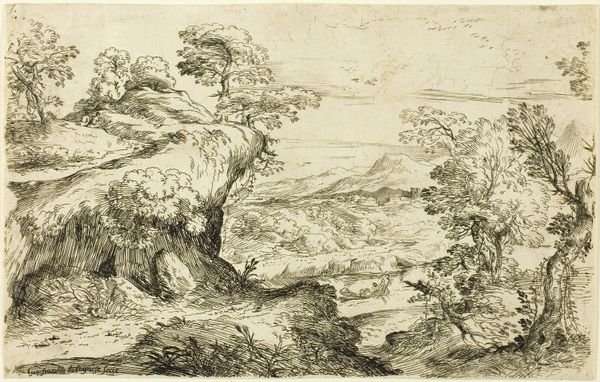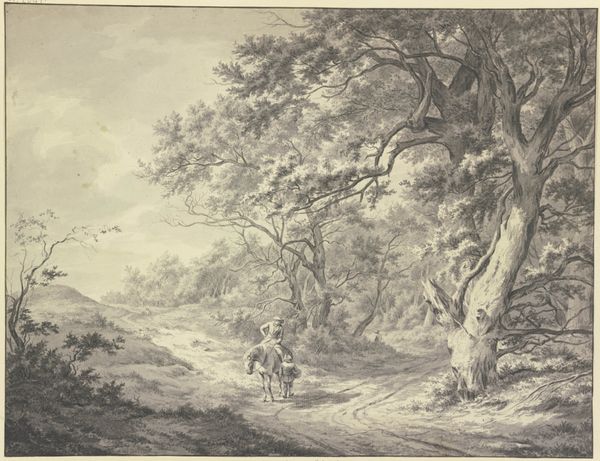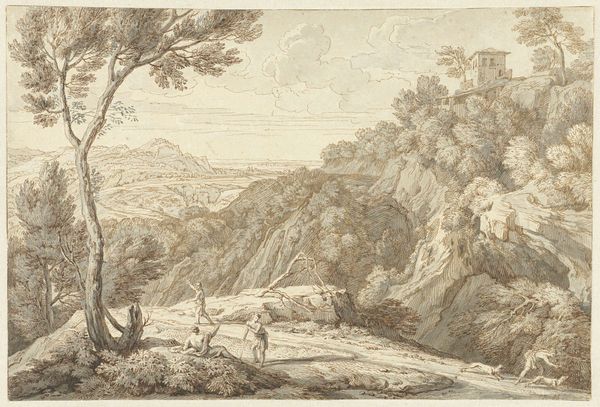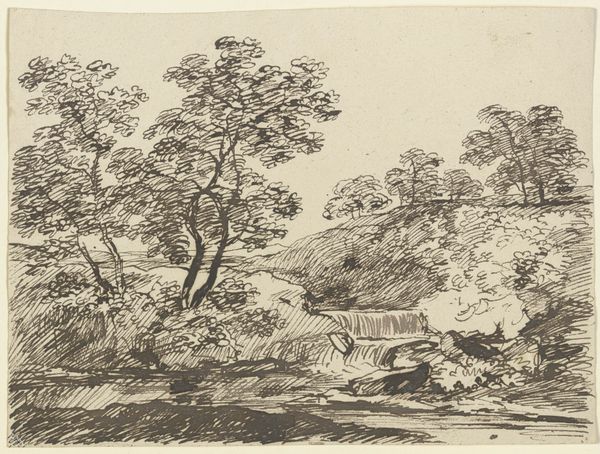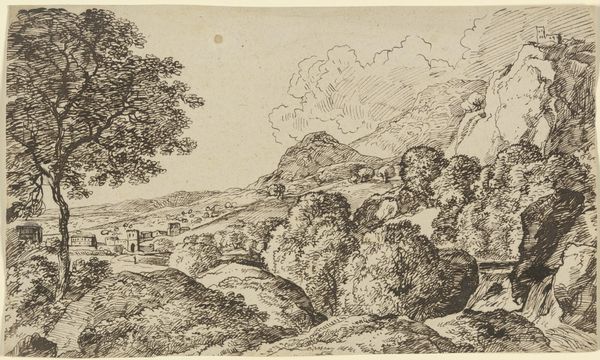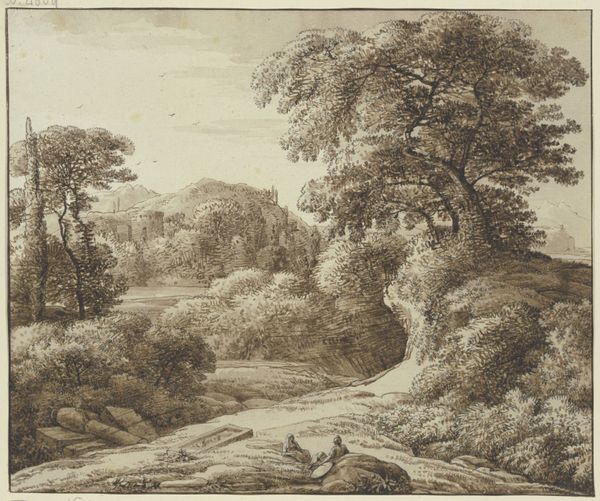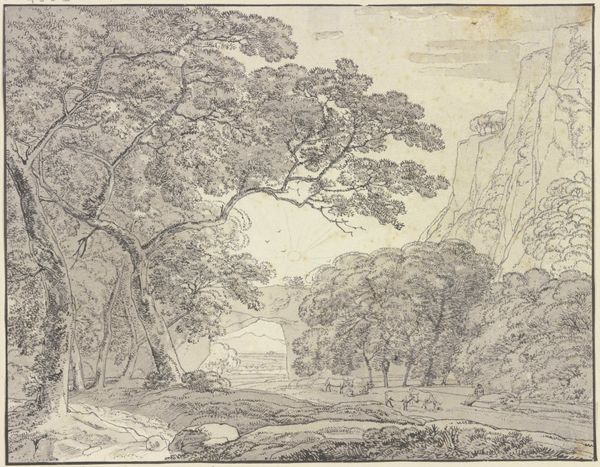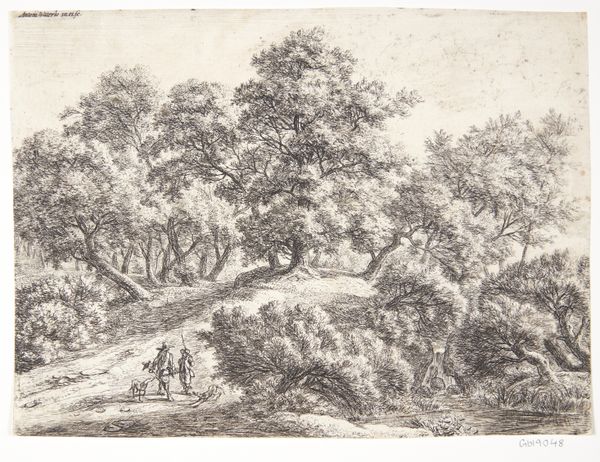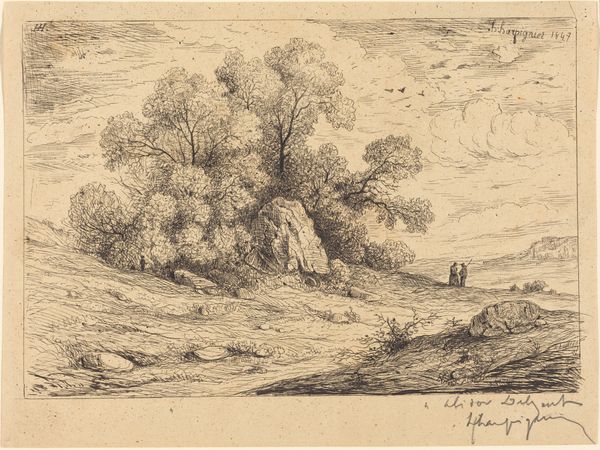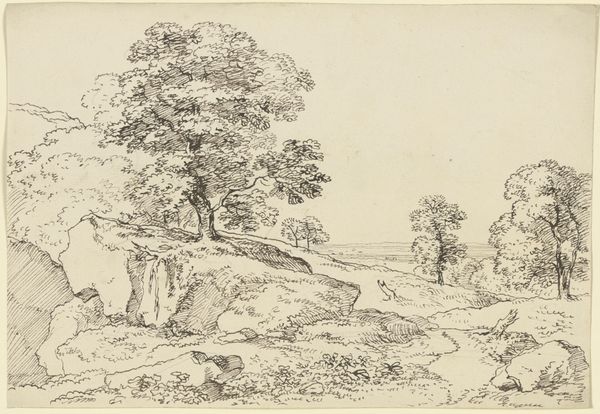
drawing, print, etching, ink
#
drawing
# print
#
etching
#
landscape
#
figuration
#
ink
#
northern-renaissance
#
realism
Dimensions: sheet: 8 1/16 x 12 3/8 in. (20.4 x 31.5 cm)
Copyright: Public Domain
Curator: Here we have a drawing by Gillis Neyts, dating somewhere between 1635 and 1687, entitled "Landscape with old trees and figures." It’s a lovely example of the detailed landscapes that were becoming increasingly popular at the time, rendered in ink. Editor: My immediate reaction is of stillness, and of quiet contemplation. The tones are soft, and while meticulously detailed, it evokes a mood of peaceful observation. Curator: The "Northern Renaissance" style that is immediately apparent is typical of Neyts' time. We see this pursuit of realism within this drawing, a move to show the world and life, accurately and sometimes, almost idealized. Do you feel this one leans one way or the other, idealized or real? Editor: It’s hard to say, but I see elements of both. The detail of the old trees and figures gives a sense of realism; there is certainly decay that can be witnessed in the roots of that large, dominating tree to the left. That suggests life as it exists. But there is also the human figure who feels romantically placed, in an almost timeless journey, observing it all, too. The entire city and landscape almost serves them in its placidity, not imposing. The landscape takes on that meaning. Curator: I find the positioning of the figure significant; he stands almost exactly in the middle ground, which highlights this relationship you speak of. But the lone traveler and reclining figures become more complex considering what was happening politically at this time; increased emphasis being placed on individual experience in the face of wider upheaval. Editor: And the old tree almost feels like a sentinel. Trees and old forests often symbolized wisdom, and a connection to the past and also the self. It creates that mood that is so palpable. It becomes a protector, if even of this particular memory. It might also symbolize family and connection. The fact that it's old is something I feel is a conscious decision by Neyts to imply continuity. Curator: Absolutely. So, considering this, what feeling is now most persistent after our discussion of symbols in place here? Editor: I'd have to say of resilience and quiet endurance. There is a story here, just beneath the surface, isn't there? Curator: Precisely, thank you for highlighting those telling images that take us to that feeling today.
Comments
No comments
Be the first to comment and join the conversation on the ultimate creative platform.
